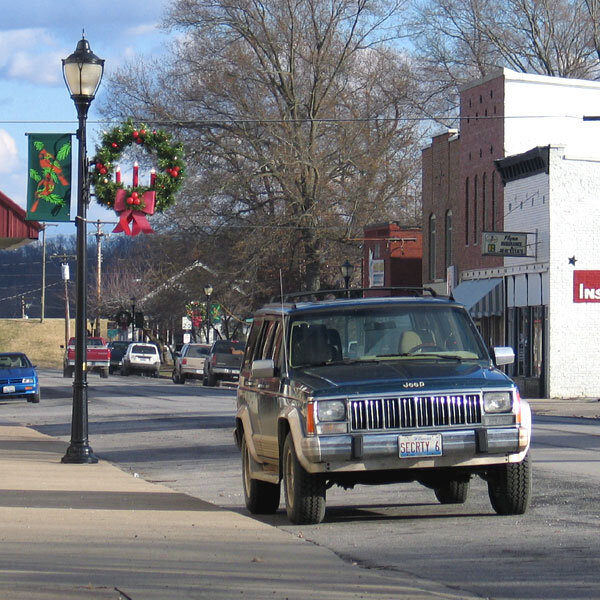Jeep / Cherokee / Indian
VIEW JEEP / CHEROKEE / INDIAN WEBSITE
In 1838 and 1839, eleven thousand Cherokees were forcibly removed from their traditional territories in Georgia, North Carolina, Tennessee, and Alabama and relocated west of the Mississippi River to what is now Oklahoma.
Four thousand people died on the journey known as the Trail of Tears.
In 1987 the US Congress designated the Trail of Tears National Historic Trail. It stretches 2,200 miles across portions of nine states.
Because most of the paths that comprised the original removal routes followed existing roads that are still in use today, it is possible to drive an approximation of the Trail of Tears.
Daniel Butrick, a white missionary, and his wife Elizabeth traveled with the Cherokees along the northern route of the Trail of Tears, which passed through Illinois in December 1838 and January 1839.
Almost 175 years later, other Cherokees can be found along the Trail of Tears Auto Route.
“As important as the moving of people from point A to point B, however, is the fact that automobiles express a driver’s sense of self and of the nature of his or her power. The tough guy who needs a military-style sport-utility vehicle, the customized cars emerging out of youth and ethnic cultures, advertisers’ gendered invocations of truck-driving manliness and soccer-mom vanliness, the identities, adventures, and nostalgia we invest in the idea of the open road - all these are part and parcel of a culture imaginatively built around automobility.
Things get weird, however, when the symbolic systems built on cars and Indians intersect. Even as today’s highways teem with Jeep Cherokees, Pontiac Azteks, Dodge Dakotas, and other ‘Indian cars,’ there still remains, for many Americans, something disorienting about Geronimo - and his real and metaphoric descendants - cruising around in Cadillacs. On the one hand, there is a palpable disconnection between the high-tech automotive world and the primitivism that so often clings to the figure of the Indian. At the same time, however, those very distinctions are constantly being squashed back together. Take, for example, the Jeep Cherokee. Jeep and Cherokee overflow in a partnered representation of nature - the latter as its human essence, the former as the ironic escape route that gets you away from the city and back to the natural world. The imagined separation of Indians and cars, and the mixing together of meanings, gets even more estranging when you try to juggle the symbolic ambiguities while at the same time admitting that flesh-and-blood Indian people may own, drive, and like cars. How might one think about uncertainties conjured up, for instance, when the non-Indian world turns to imagine a Cherokee in a Cherokee - or a Geronimo in a Cadillac? [...]
This juxtaposition - between Geronimo’s Cadillac and Jeep Cherokees - suggests the range of these symbolic systems. Where the Cadillac can’t help but evoke class and race distinctions and inversions, the history of the Jeep as a rugged military vehicle translated into a sport and recreational context points its meanings in another direction. Likewise, where Geronimo evokes a more particular history of resistance - which plays powerfully off the meanings evoked by Cadillac - Cherokee regretfully functions all too often as a general signifier of Indianness, one well suited to enhance the nature-focused meanings being constructed around Jeeps as sport-utility vehicles. All of which is to say that, in the economy of meaning surrounding Indians and automobiles, specificity matters. [...]
To preserve the power of such an Indian antimodernism, of course, imagined Indians had to be protected from the contamination of the modern. That separation has driven expectations - even as it has proved impossible to sustain. As in the case of the Jeep Cherokee, the distinct symbolic vocabularies swirling around Indians and automobiles often meshed together smoothly. The pairing of antimodern Indianness with the primitive freedom and adventure of the open road, for example, proved almost irresistible.”















